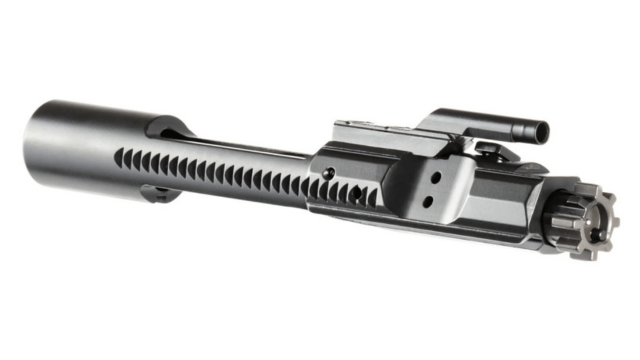The Role of Bolt Carrier Groups in AR Performance
The performance of any AR-style rifle is highly dependent on the integration and functionality of its core components. Among these, the Bolt Carrier Group (BCG) plays a pivotal role. Known for its critical function within the firing mechanism, a properly functioning AR 15 BCG can significantly enhance the rifle’s overall performance, reliability, and accuracy. This article looks into the essential aspects of BCGs, examining how they operate, their impact on rifle performance, and the importance of choosing the right BCG for specific needs. With a focus on technical insights and practical advice, the exploration into BCG technology provides a foundational understanding suitable for anyone interested in the mechanical sophistication of AR-style rifles.
Overview of BCG Technology in Rifles
The Bolt Carrier Group (BCG) is at the heart of the functionality and operation of AR-style rifles. It is a complex assembly responsible for several critical actions within the firearm: feeding, firing, extracting, and ejecting. The BCG consists of the bolt itself, the carrier, the firing pin, the cam pin, and the gas key. The carrier houses the bolt and facilitates its movement back and forth within the firearm’s receiver.
The gas key, attached to the carrier’s top, channels the propellant gases back into the BCG from the barrel, thus driving the bolt rearward to cycle the rifle. This sequence is crucial for the semi-automatic operation of AR rifles, enabling rapid firing with reliable precision. The bolt in the BCG also plays a critical role in locking into the barrel extension, which ensures that the chamber is securely closed before a round is fired. Proper bolt and barrel extension engagement is essential for safety and accuracy.
How to Choose and Maintain Your AR 15 BCG
Selecting the appropriate AR 15 BCG is essential for ensuring your rifle’s optimal performance and longevity. A BCG’s material, coating, and build can significantly affect its durability and functionality. BCGs made from high-grade steel such as Carpenter 158 or 9310 steel offer superior strength and wear resistance, which is crucial for handling the high pressures of firing rounds. The finish of the BCG, including options like phosphate, nitride, or nickel boron coatings, also reduces friction and enhances corrosion resistance. Maintenance is equally crucial; regular cleaning and lubrication of the BCG are imperative to prevent malfunctions and extend the rifle’s life. This involves disassembling the group, thoroughly cleaning all parts from carbon build-up, and applying suitable gun lubricants to reduce wear during operation.
The Impact of BCGs on Rifle Reliability and Accuracy
The reliability and accuracy of a rifle are significantly influenced by the condition and quality of its Bolt Carrier Group. A well-maintained BCG ensures consistent performance under various conditions by reliably cycling rounds and maintaining a stable platform for shooting. The precision with which a BCG fits and moves within the rifle’s receiver can affect the alignment of the bolt with the barrel, impacting the accuracy of the fired rounds. Additionally, the weight of the BCG can influence the rifle’s balance and recoil management. A heavier BCG may offer smoother recoil, which is beneficial for maintaining accuracy during rapid fire. In contrast, a lighter BCG could increase cycling speed, which is helpful in competitive scenarios where speed is critical.
Customizing BCGs for Enhanced Performance
Enhancements and modifications to the Bolt Carrier Group can further refine the performance of an AR-style rifle. Upgrading to an adjustable gas key can allow for fine-tuning the gas flow, optimizing the rifle’s operation with different ammunition types or suppressor use. Similarly, low-mass BCGs are available that reduce the overall weight of the moving parts, thereby decreasing felt recoil and increasing the cyclic rate. Such customizations can be particularly advantageous for competitive shooters or tactical operators who require their rifles to perform under particular conditions.
Safety and Legal Considerations for BCGs
Safety is paramount when dealing with any firearm component, and the BCG is no exception. Ensuring the BCG is installed correctly and functions safely is crucial to prevent accidents and malfunctions. There are legal considerations to be aware of. In some jurisdictions, certain features of BCGs might be regulated or restricted. Owners need to be informed about local and federal laws that could impact the configuration of their rifles, including those related to the BCG. Compliance with these regulations ensures legal firearm ownership and promotes responsible usage and safety.
The Bolt Carrier Group is a central component in the functionality and effectiveness of AR-style rifles. Understanding its operation, impact on rifle performance, and maintenance requirements allows owners to maximize the potential of their firearms. Whether enhancing the rifle for precision shooting, competitive performance, or ensuring reliable operation under tactical conditions, the careful selection and maintenance of the BCG are fundamental. With proper care, customization, and adherence to legal standards, the BCG will continue to serve as a linchpin in the high performance of AR rifles, contributing to their legacy and future advancements in firearm technology.






